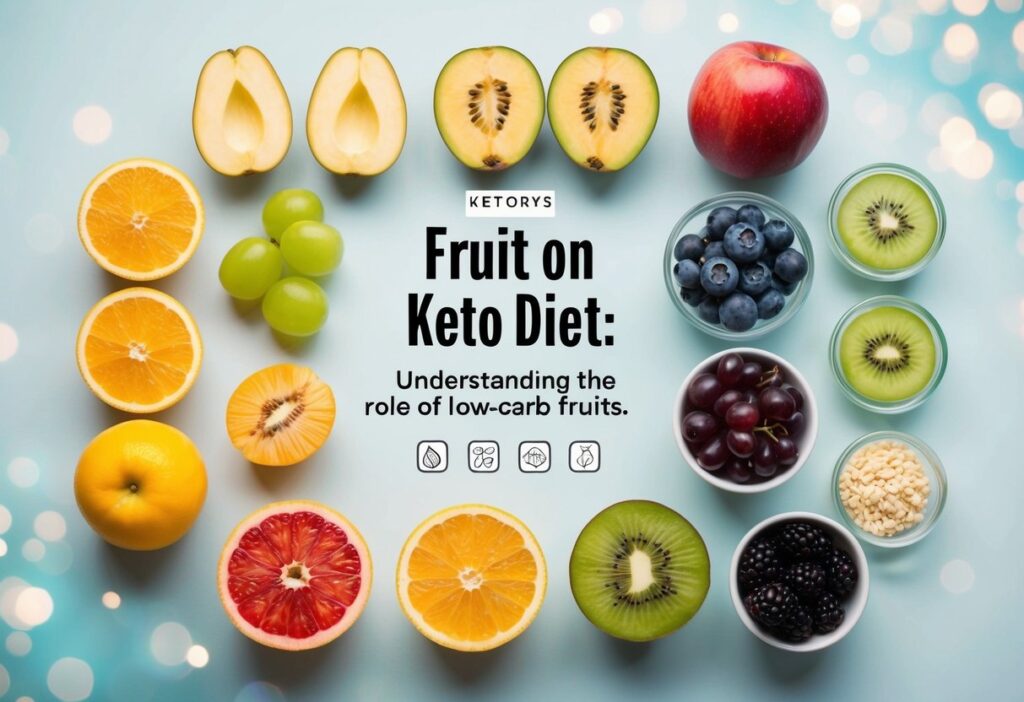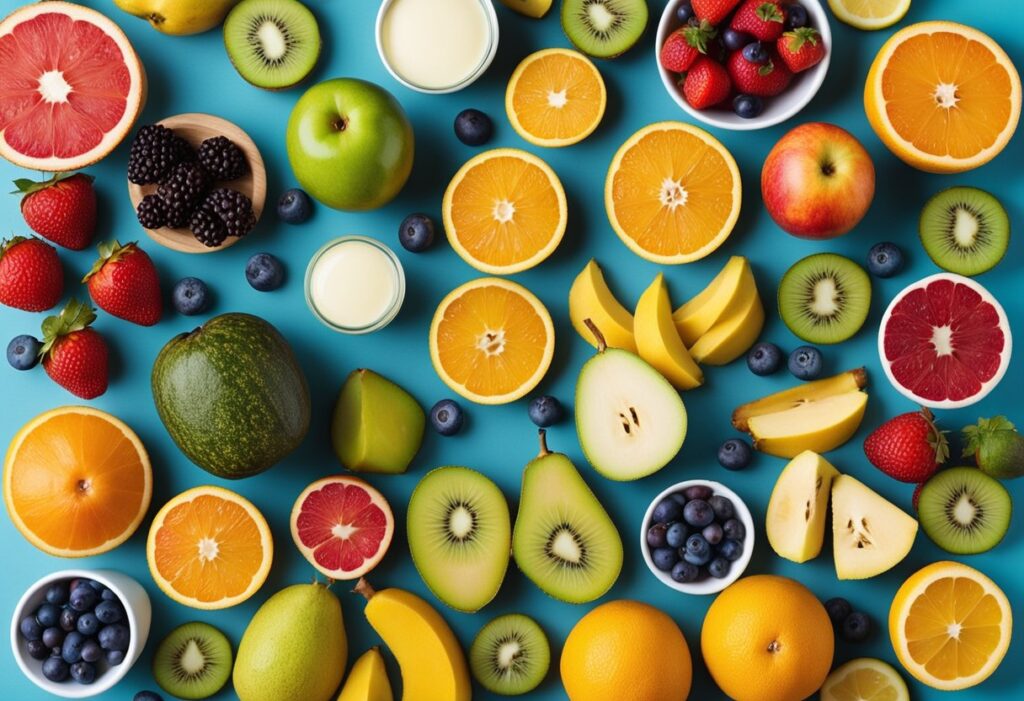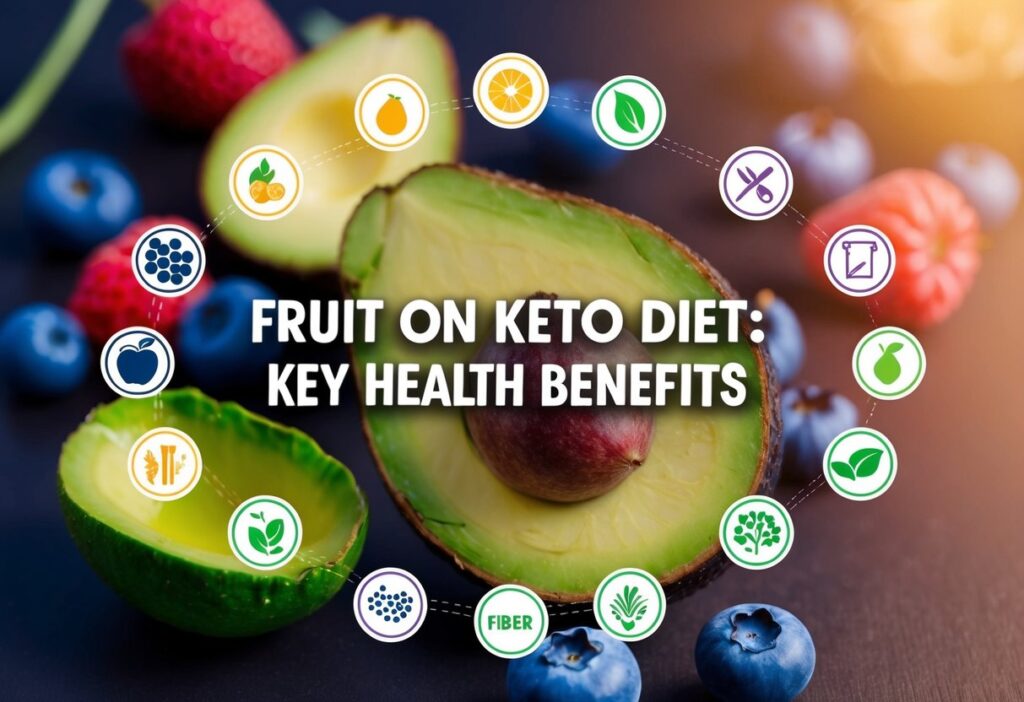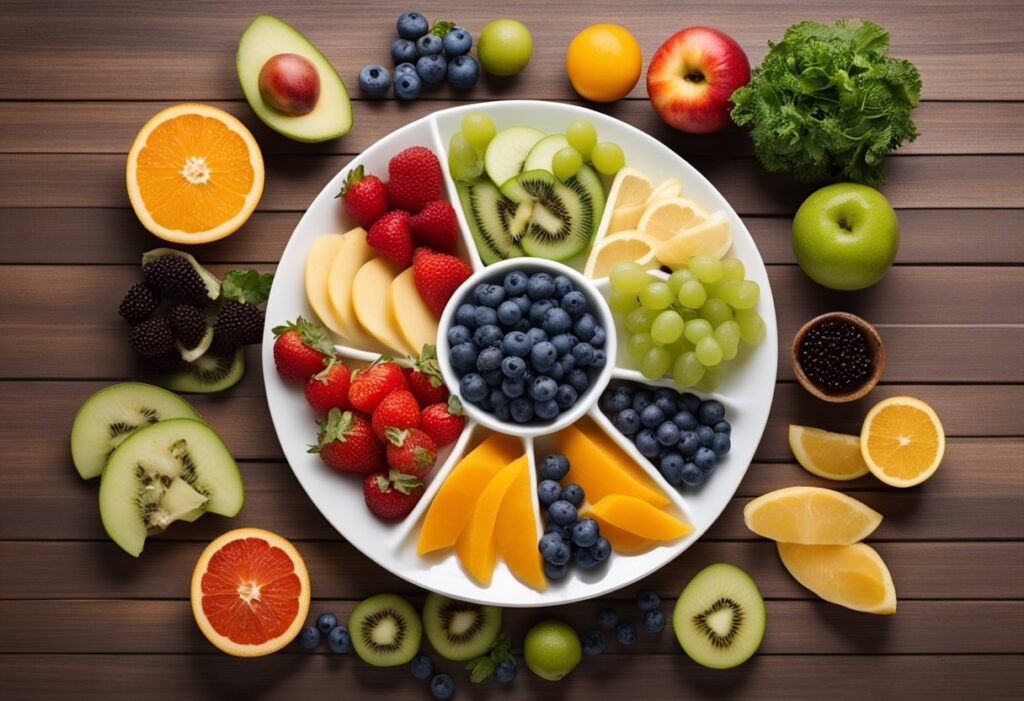The Ultimate Guide to Enjoying Fruits on Keto Diet: Top Picks and Smart Strategies
This post may contain affiliate links. If you purchase through these links, I may earn a small commission at no extra cost to you. LEARN MORE.
Exploring the world of fruits on keto diet opens up a realm of delicious possibilities. In this comprehensive guide, we unveil the top picks and smart strategies for enjoying fruits while staying in ketosis. Gone are the days of believing that fruits are off-limits on a keto lifestyle.
Get ready to discover flavorful low-carb options that will satisfy your cravings and keep you on track towards your health goals. From berries bursting with antioxidants to creamy avocados packed with healthy fats, we’ve got you covered with the ultimate tips and insights.

Whether you’re a seasoned keto enthusiast or just starting your journey, this guide will navigate you through the colorful and nutrient-rich world of keto-friendly fruits. Say goodbye to fruit FOMO and hello to a diverse and exciting way to enjoy fruits on your keto diet.
New to keto? Start with our Custom Keto Diet Explained for Beginners guide to build a strong foundation for your low-carb journey
Understanding the Role of Fruits on Keto Diet

The ketogenic diet is primarily focused on drastically reducing carbohydrate intake while increasing fat consumption. This shift in macronutrient ratios aims to induce a metabolic state known as ketosis, where the body efficiently burns fat for energy instead of carbohydrates.
However, many individuals following a keto diet often grapple with the misconception that fruits are completely off-limits. Understanding the role fruits can play within this dietary framework is essential for maintaining balance and enjoyment in your meals.
Fruits, while generally higher in sugars compared to vegetables, can still be included in moderation on a ketogenic diet. The key lies in choosing those that have lower carbohydrate content, thus allowing for occasional indulgence without disrupting ketosis.
Fruits are rich in vitamins, minerals, and antioxidants, which are crucial for overall health. They contribute to a well-rounded diet, providing essential nutrients that can help mitigate some of the deficiencies that may arise from eliminating certain food groups.
Moreover, incorporating the right types of fruits can enhance your meals and snacks, offering not just flavor but also texture and variety. For instance, berries can add a burst of sweetness to a salad, while avocados provide creaminess to smoothies.
Understanding how to navigate the fruit aisle while adhering to a keto lifestyle opens up an exciting array of culinary possibilities, making it easier to sustain a long-term commitment to this way of eating.
Learn more about balancing your macros in our How to Calculate Macros for Keto: Step-by-Step guide
Top Low-Carb Fruits for Keto Diet

When it comes to fruit choices on a ketogenic diet, selecting low-carb options is crucial. Berries are often at the top of the list due to their lower sugar content and high antioxidant properties.
Raspberries, strawberries, blackberries, and blueberries are all excellent choices, providing a delicious way to satisfy sweet cravings while remaining within your carb limits. For example, a half-cup of raspberries only contains around 3.5 grams of net carbs, making them a perfect addition to your keto meal plan.
Another fantastic option is the avocado. This unique fruit is packed with healthy fats, making it a staple in the keto community. Not only is it low in carbohydrates, but it also offers an array of health benefits, including heart-healthy monounsaturated fats and fiber.
Half an avocado contains about 2 grams of net carbs, which allows for it to be incorporated into salads, smoothies, and even desserts, enhancing both flavor and nutritional value.
Olives are another low-carb fruit that deserves a spot on your keto-friendly shopping list. These little powerhouses are rich in healthy fats and packed with antioxidants. A serving of olives typically contains just 1 gram of net carbs, making them an ideal snack.
They can be enjoyed on their own or added to salads and antipasto platters, providing a savory profile that complements many dishes. By focusing on these low-carb fruits, you can enjoy the sweet taste of nature while adhering to your keto goals.
For a comprehensive list of keto-friendly ingredients, see our Ultimate Guide to the Best Keto Diet Food List.
Strategies for Incorporating Fruits into a Keto Diet

Successfully integrating fruits into your keto diet requires a thoughtful approach that balances enjoyment with adherence to your carbohydrate limits. One effective strategy is to prioritize portion control.
By being mindful of serving sizes, you can indulge in fruits without exceeding your daily carb allowance. For instance, instead of having a large bowl of fruit salad, consider adding a small handful of berries to your Greek yogurt or incorporating a few slices of avocado into your meal.
Another strategy involves pairing fruits with high-fat foods to help stabilize blood sugar levels and enhance satiety. Combining berries with whipped cream or avocados with olive oil can create satisfying snacks or meals that curb your cravings while keeping you within your macros.
This not only makes the fruit more enjoyable but also supports the principles of the ketogenic diet, which emphasizes the importance of healthy fats.
Additionally, consider using fruits as a flavor enhancer rather than the main component of your meals. For example, adding a few slices of citrus to a fish dish or using a small amount of fruit puree in salad dressings can provide a burst of flavor without overwhelming your carb count.
By utilizing fruits in creative ways, you can enjoy their taste and health benefits while still adhering to the principles of the keto lifestyle.
Need more ideas for balanced meals? Visit our Keto Lunch Recipes for additional inspiration.
Pair your fruit snacks with a high-fat, low-carb meal plan – explore our Custom Keto Diet for personalized guidance.
Recipes and Meal Ideas with Keto-Friendly Fruits

The versatility of keto-friendly fruits allows for a wide range of delicious meal ideas that can make your diet enjoyable and satisfying. One simple yet delightful recipe is a mixed berry salad, which can be made by combining fresh strawberries, blueberries, and raspberries with a sprinkle of lemon juice and a dollop of whipped cream or mascarpone.
This refreshing dish is perfect as a side or a light dessert, offering a sweet taste while keeping carbs in check.
Another excellent option is an avocado and bacon salad, where you can mix diced avocado with crispy bacon bits, diced tomatoes, and a light vinaigrette. To add a fruity twist, consider incorporating some olives or a handful of diced strawberries.
This combination provides healthy fats, protein, and a hint of sweetness that makes the salad both satisfying and nutritious.
For those who enjoy smoothies, a keto-friendly berry smoothie can be a fantastic way to start your day. Blend together a handful of spinach, half an avocado, a small portion of frozen berries, coconut milk, and a scoop of protein powder for a creamy and satisfying breakfast.
This smoothie packs a nutritional punch while remaining low in carbs, making it an ideal choice for your keto meal plan. By experimenting with these recipes and meal ideas, you can discover the exciting ways to incorporate fruits into your ketogenic lifestyle.
For more creative recipes, check out our Keto Recipe Ideas: Delicious Meals for a Low-Carb Lifestyle post.
Benefits of Consuming Fruits on a Keto Diet

Including low-carb fruits in your ketogenic diet can offer numerous health benefits that contribute to overall wellness. Firstly, fruits are a rich source of vitamins and minerals, which are essential for maintaining proper bodily functions.
For instance, vitamin C found in berries is crucial for immune function and skin health, while potassium in avocados helps regulate blood pressure. By ensuring adequate intake of these nutrients, you can support your body while following a low-carb regimen.
Furthermore, the antioxidants present in fruits play a vital role in combating oxidative stress and inflammation. Regular consumption of antioxidant-rich fruits can help protect your cells from damage caused by free radicals, which are linked to various chronic diseases.
Berries, in particular, are known for their high antioxidant levels, making them a great choice for promoting health and longevity while on a keto diet.
Lastly, integrating fruits into your meals can enhance satiety and satisfaction, making it easier to stick to your dietary goals. The natural sweetness of fruits can curb cravings for sugary snacks and desserts, allowing you to enjoy a treat without resorting to high-carb options.
This psychological benefit can be crucial for long-term adherence to a ketogenic lifestyle, as it helps prevent feelings of deprivation and enhances overall enjoyment of food.
Discover additional health benefits of low-carb eating in our Keto Diet for Immune Health: Enhance Defenses Through Diet article.
Potential Pitfalls to Avoid When Eating Fruits on Keto

While fruits can be a delightful addition to a ketogenic diet, there are potential pitfalls to be aware of to ensure you remain on track with your goals. One common mistake is misjudging portion sizes.
Many individuals may overlook the carb content of fruits, thinking they can eat them freely. It’s essential to measure your servings and keep a close eye on your daily carbohydrate intake to avoid inadvertently exceeding your limits.
Another pitfall is choosing high-sugar fruits that can quickly derail your progress. Fruits such as bananas, grapes, and mangoes are delicious but can contain significantly higher amounts of carbohydrates compared to low-carb options.
It’s important to familiarize yourself with the carb counts of various fruits and stick to those that align with your keto guidelines. This knowledge will empower you to make informed choices and enjoy fruits without guilt.
Lastly, relying too heavily on fruit as a snack or meal component can lead to an unbalanced diet. While fruits provide essential nutrients, they should complement a diet rich in healthy fats and proteins.
Ensure that your meals are well-rounded by incorporating other food groups, such as leafy greens, nuts, and quality protein sources. This balance will help you maintain ketosis while benefiting from the goodness that fruits can offer.
For tips on managing your carb intake and staying in ketosis, see our Keto Diet for Beginners: Easy Tips to Kickstart Your Journey guide
Balancing Fruit Consumption with Macros on a Keto Diet

To successfully include fruits in your ketogenic lifestyle, it is crucial to balance their consumption with your overall macronutrient goals. The typical macronutrient ratio for a keto diet is approximately 70-75% fat, 20-25% protein, and only 5-10% carbohydrates.
This means that while you can enjoy fruits, they must be accounted for within the limited carb allowance of your daily intake.
An effective way to manage this balance is by planning your meals in advance. By knowing the carbohydrate content of the fruits you want to include, you can allocate your daily carb allowance accordingly.
For instance, if you plan to enjoy a serving of berries with breakfast, you might choose to limit your carb intake from other sources throughout the day to maintain your desired ratio. Meal prepping can be a helpful tool in ensuring that you stay within your macro goals.
Additionally, keeping a food diary or using a tracking app can aid in monitoring your macronutrient intake. By logging your meals and snacks, you can gain valuable insights into how different foods, including fruits, affect your overall carb consumption.
This practice not only helps in maintaining balance but also encourages mindfulness about what you are eating, making it easier to stay on track with your ketogenic journey.
For more detailed macro strategies, check out our How to Calculate Macros for Keto: Step-by-Step guide.
Supplements to Enhance Fruit Intake on Keto

While fruits provide numerous health benefits, some individuals may still find it challenging to meet their nutritional needs while adhering to a strict ketogenic diet. In such cases, supplements can serve as an excellent way to enhance fruit intake without exceeding carbohydrate limits.
One popular option is powdered greens or fruit extracts, which condense the nutrients of various fruits and vegetables into a convenient form. These powders can be mixed into smoothies or shakes, providing a boost of vitamins and minerals with minimal carbs.
Another beneficial supplement is a high-quality multivitamin, which can help fill in the gaps that may arise from limiting certain food groups. Many multivitamins are designed specifically for those on a ketogenic diet, ensuring that you receive adequate amounts of essential nutrients while keeping your carb intake low.
This added support can be particularly beneficial for newcomers to the keto diet, who may struggle to balance their nutritional needs.
Additionally, omega-3 fatty acid supplements, such as fish oil, can complement a diet rich in fruits and healthy fats. Omega-3s are known for their anti-inflammatory properties and can support heart health, which is especially important when focusing on a high-fat diet.
By incorporating these supplements thoughtfully, you can enhance your overall health and well-being while enjoying the benefits of fruits on your keto journey.
Check out the best selling supplement from Amazon below.
To further optimize your keto journey and support the benefits of including low-carb fruits, consider supplements such as Java Burn for boosting metabolism, Nagano Tonic for sustained energy and clarity, and Vive Biotics for enhancing gut health. These products can help ensure that your body efficiently processes nutrients and maintains ketosis, allowing you to enjoy your favorite fruits without worry.
Learn more about supplement options in our 4 Must-Have Keto Essentials for Weight Loss & Energy post.
Upgrade your routine with our top picks: Java Burn, Nagano Tonic, and Vive Biotics – all designed to supercharge your keto lifestyle!
Conclusion and Final Thoughts
Ready to transform your keto journey with a personalized approach? Discover our Custom Keto Diet now and unlock a world of low-carb recipes that make healthy living delicious!
The journey of enjoying fruits while following a ketogenic diet is not only possible but can also be a delightful experience filled with flavor and nutrition. By understanding which fruits are low in carbohydrates and learning how to incorporate them into your meals, you can create a satisfying and varied diet that aligns with your health goals.
Remember that moderation is key. Being mindful of portion sizes and choosing lower-carb options will allow you to indulge in the sweetness of fruits while maintaining ketosis.
Additionally, by balancing your fruit consumption with other macronutrients and utilizing supplements when necessary, you can ensure that your nutritional needs are met without compromising your keto lifestyle.
Ultimately, embracing the colorful world of keto-friendly fruits can enhance your meals and promote overall well-being. With the strategies and insights shared in this guide, you can confidently navigate your fruit choices, enjoy the benefits they provide, and cultivate a fulfilling keto experience that leaves you feeling energized and satisfied.
Say goodbye to fruit deprivation and hello to a vibrant and delicious way of eating!
For more meal plan for beginners, check out our Free Keto Meal Plan for Beginners: Easy Recipes and Tips to Start Your Journey post.



